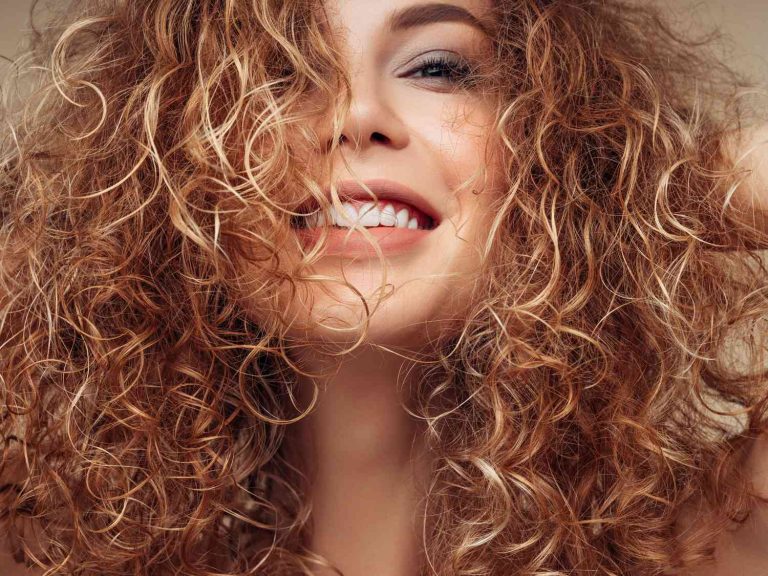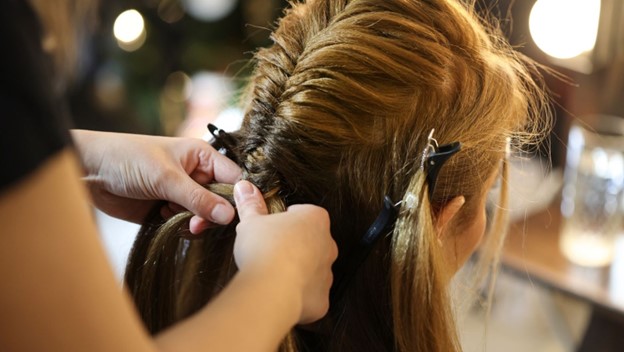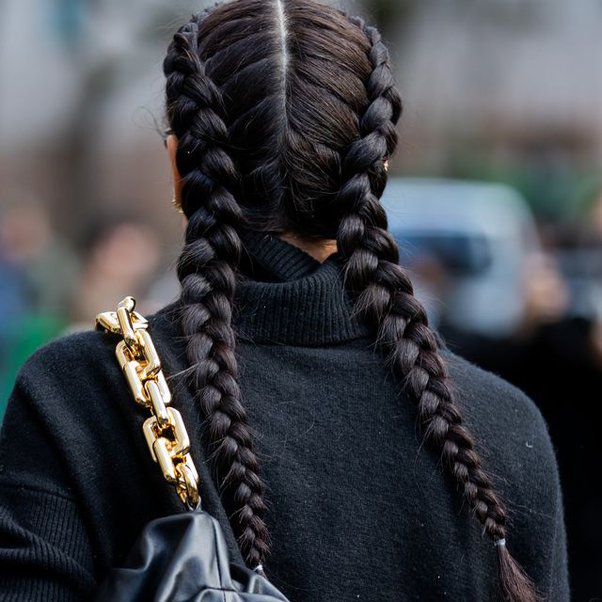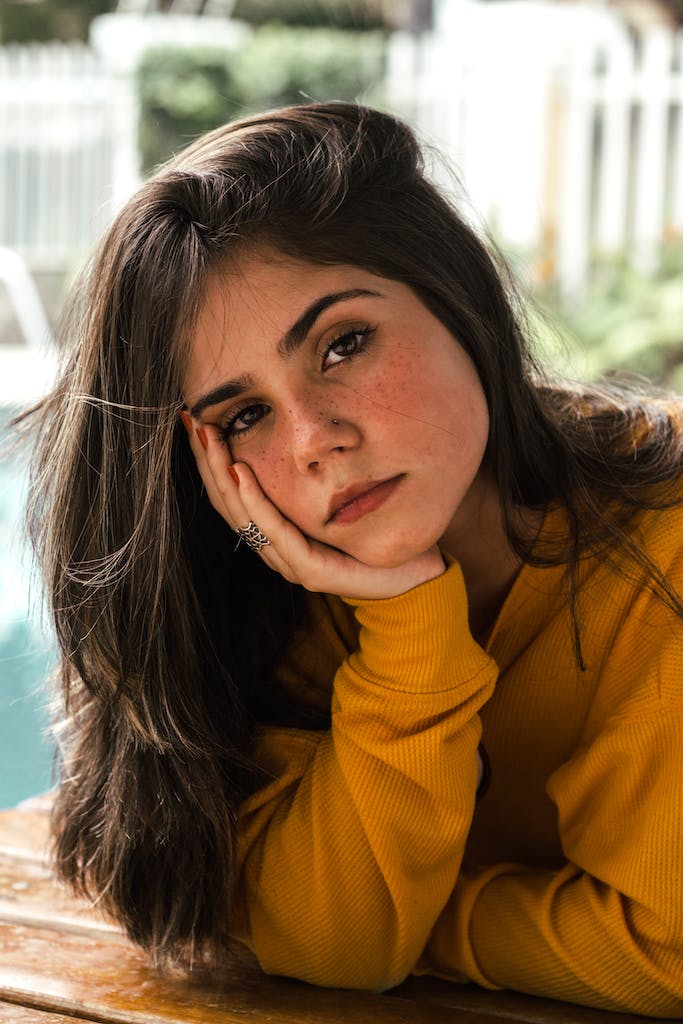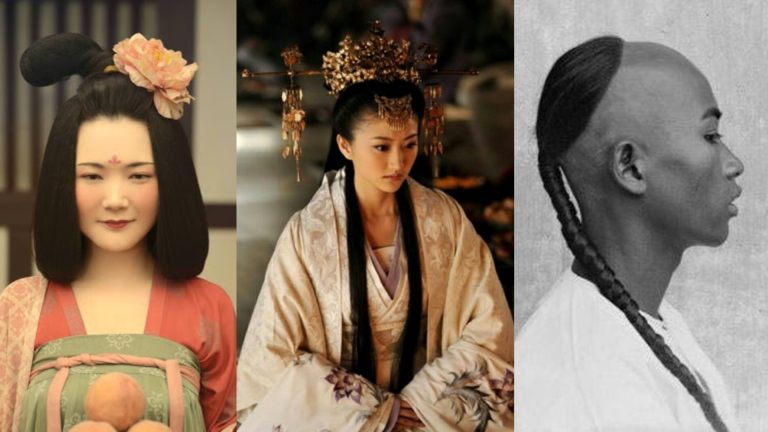Why Is My Hair Curly Underneath But Straight on Top?
If you have curly hair, you may have noticed a perplexing phenomenon: your hair is curly closer to your scalp or neck but straightens out towards the top and ends. What causes this curly underneath/straight on top hair pattern?
As someone who has struggled with controlling my naturally curly hair for years, I have done a lot of reading up on the science behind curly locks. In this blog post, I will share what I have learned about the common causes of this curly/straight hair dichotomy and tips for managing combination hair textures.
Causes of Straight Hair on Top but Curly Underneath
Contents
- Causes of Straight Hair on Top but Curly Underneath
- Tips for Styling Combination Hair
- FAQs
- Why is my hair curly underneath but straight on top?
- Why is my hair curly underneath but straight on top and bottom?
- Why is my hair curly underneath but straight on top back?
- Why did my straight hair suddenly become curly underneath?
- How do I style my curly underneath, straight on top hair?
- Why does my curly hair fall straight when wet?
- Why did my hair go curly after I had a baby?
- Why is it curly on the underside but stringy on top?
- What causes combination hair textures?
- How do I make my straight roots curly?
- Why did my curly perm come out straight on top?
- What is the Curly Girl Method for wavy, straight hair?
- How do I make straight hair at the top curly?
- Why did my hair suddenly start curling at the ends?
- Is my hair straight or wavy?
Follicle Shape and Location
The root cause (no pun intended!) lies in the shape and location of your hair follicles. Hair follicle shape determines curl pattern. Curly follicles are more oval or kidney-bean shaped, while straight hair grows from round follicles. Follicle size also plays a role – thicker hair strands grow from larger follicles located higher up on the scalp.
Human hair typically has 100,000 to 150,000 strands on the average scalp. But follicle patterns can vary greatly among individuals. It is common for the follicles at the nape of the neck and around the ears to be more oval-shaped, programmed for tighter curl formation. The follicles at the crown and top of the head are often rounder, coded for straight locks.
So in combination hair, the curly underside and straighter top reflect the different follicle types clustered on your unique headmap. Like a good hairdresser, your DNA stylist gave you layers!
Hormones and Age
Hormones also influence hair shape as we mature. Many notice their straight hair gradually curling up from puberty onward due to changing androgen levels.
Pregnancy is another hormonal event that can unpredictably alter curl pattern. The influx of new motherhood hormones seems to “shock” some women’s hair into switching from stick-straight to corkscrew curls or vice versa!
As we get older, hormone levels decline and hair follicles shrink, reducing volume and sometimes relaxing texture. By midlife, curly hair often loses some of its bounce or starts straightening out toward the ends.
Leave-in Conditioners and Anti-Frizz Serums
Many curlies rely on leave-in conditioners and anti-frizz serums to boost moisture, enhance definition, reduce knotting, and control flyaways in the warmer, drier months. But it is tricky to find the right products for combination hair.
I have found that nourishing leave-ins tend to intensify my underneath ringlets while softening the wave on top. Defining creams also encourage curl formation. So I use them sparingly to avoid over-curling my crown and straight ends. A botanical hair serum with silk proteins helps smooth things out. Light-hold gels scrunch in well to tame the super-coily bits without being too heavy.
Damage and Chemical Processing
Damage from hot styling tools, chlorine, hair dye, bleach, perms, and straightening treatments does not hit all your hair evenly either. The most porous, fragile sections—typically the underside and ends—get compromised first and curl up. The more-protected top stays relatively unchanged.
Many women with curly hair opt for a Brazilian blowout or keratin treatment to relax things. But these chemical services tend to affect the naturally straighter sections more strongly. That is why you will sometimes see women with intensely frizzy underneath layers but rather limp, flat-ironed-looking locks on top post-treatment. Not an ideal look!
Humidity and Weather
Humidity levels, temperature changes, and other weather events impact hair texture too. High humidity and summer rainstorms swell the hair cuticle, encouraging natural curl and wave. While low moisture winter air causes static electricity, leaving hair to appear straighter temporarily.
As humidity increases, curly hair underneath will become more defined as the day goes on. The top may gently ripple or stay stick-straight. Then, when humidity drops again, your hair will revert to its usual state. Some describe this phenomenon by saying, “My curls fall” or “My hair is misbehaving.”. But it is simply physics!
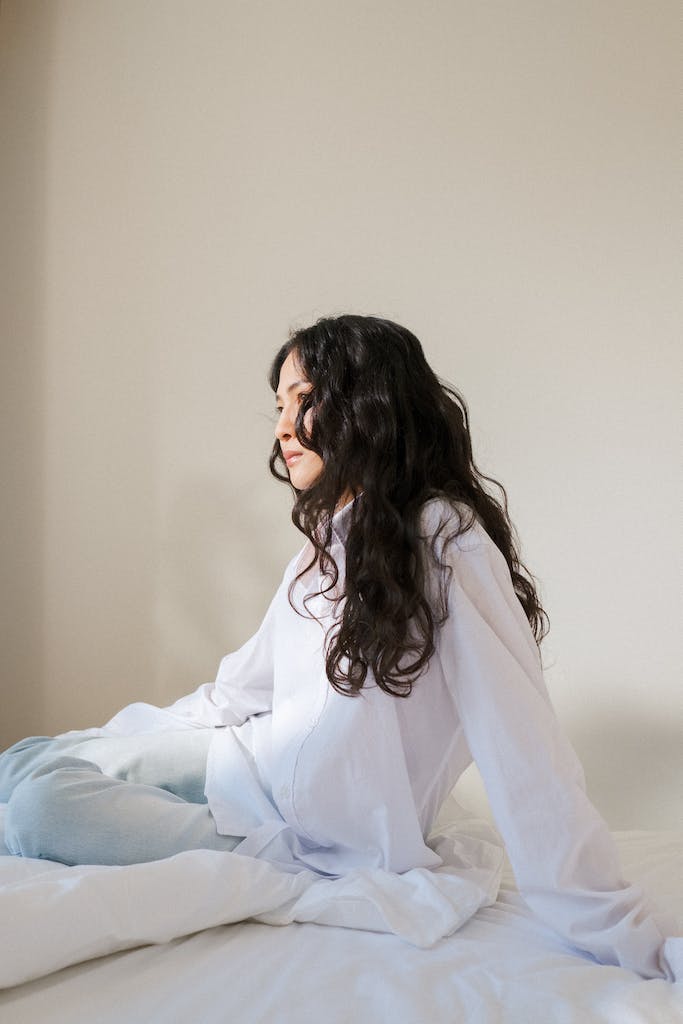
Tips for Styling Combination Hair
Having hair that is curly underneath but straight up top presents unique challenges when it comes to daily styling and special occasion dos. Here are my best tips for working with combination textures:
Know Your Curl Pattern
Figure out your specific curl types based on the famous Andre Walker classification system. It ranges from 1 (stick straight) to 4C (tight coils). This helps you use the right products and techniques. For me, my crown is 2A, the back is 3B, and underneath layers 3C.
Lightly Diffuse Upside Down
Diffusing wet curly hair upside down to encourages volume at the roots. Go easy on delicate straight pieces to avoid roughing up the cuticle or blasting them too dry. Cup natural curls gently to activate curl memory without disturbing straight bits.
Embrace Your Natural Texture
Work with your natural texture instead of fighting it if your straight and curly zones are fairly balanced. Define coils underneath with curl cream then add shine serum on top. Twist curly pieces away from straight sections before air drying for polished results.
Blow Out the Straight Section
If most of your hair is straight with a curly underlayer, focus heat styling efforts there. Blow dry straight strands sleek and smooth using a paddle brush. Set curly bits in velcro rollers as they dry to stretch out knots and lengthen corkscrews.
Add Loose Curls on Top
For straight hair that wants to stay pin-straight even when curled, lightly mist texturizing spray before winding large sections around a 1.25-inch barrel iron. Hold for 10 seconds max. This creates soft, bendable waves that blend better with existing kits underneath.
Disguise Over-processed Ends
If botched bleach jobs or too many hot roller sets have caused your mid-lengths and ends to frizz up, camouflage the damage. Twist them into a loose, low bun or braid to show off your pretty shortcut underneath. Schedule a salon trim to remove split ends soon.
Play with Partings and Bangs
Ask your stylist for a layered cut with face-framing fringe focused on your strongest texture. Curly bangs soften a broad forehead while straight pieces elongate round faces flatteringly. Switch up your part depending on the weather to let either texture take the lead.
Consider a Perm or Straightening
To make styling much simpler in the long term, commit to permanently altering your entire head’s texture. Perms boost straight hair’s body beautifully, and relaxers loosen tight curls gently when done properly. But be aware that these chemical services require maintenance every few months.
Embrace the Contrast
Ultimately, combination hair tells a story about your unique background and journey through life. The mismatch can represent the complexity that makes you a more empathetic and resilient person. Allow yourself to feel proud of your inner strength and wisdom expressed through your curls and waves!
FAQs
Why is my hair curly underneath but straight on top?
The shape and distribution of your scalp’s hair follicles vary, which results in this hair pattern. The follicles along the nape of your neck and around the ears often have a more oval, curly shape. Meanwhile, the follicles on the crown and top of the head tend to be rounder, which produces straighter hair. Hormones, damage, products, and weather can also affect texture.
Why is my hair curly underneath but straight on top and bottom?
Having curly underlayers with straight hair at both the crown and along the ends likely indicates some kind of chemical or heat damage. The fragile tips and underside tend to show processing effects most noticeably in the form of frizz and coils. Avoid further damaging treatments and schedule regular trims to manage the situation.
Why is my hair curly underneath but straight on top back?
Curly nape hair with straight locks on top is common because the follicles at the back of the neck often have a more oval, tightly curled shape. This contrasts with the rounder follicles on top programmed for looser waves or none at all. Let your natural texture shine through.
Why did my straight hair suddenly become curly underneath?
Straight hair can start to curl up from the bottom over time due to changing hormones, pregnancy, thinning related to aging, or low moisture levels. The delicate tips react first, becoming drier and more porous. Be gentle with fragile developing ringlets by switching to a nourishing shampoo and using a deep conditioner regularly.
How do I style my curly underneath, straight on top hair?
Work in your favor, not against it! Allow curly pieces to do their thing with the right gels and creams while lightly blowing out straight sections. Face-framing fringe focused on the straighter top part helps soften broad foreheads and balance face shapes. Embrace the contrast or consider chemical straightening for uniformity.
Why does my curly hair fall straight when wet?
This phenomenon is due to the extra weight and moisture relaxing the hair structure temporarily. Each strand becomes stretched out and elongates under the influence of water. Then, as moisture evaporates, hair dries and lightens up again, allowing curls to shrink back to their usual springy state.
Why did my hair go curly after I had a baby?
Pregnancy hormone surges can alter hair texture unpredictably. The mechanisms are not fully understood but may relate to estrogen effects. For some women, sticking straight hair spins into corkscrews post-partum. Others see their curls drop out. Texture changes could last or revert after breastfeeding ends. Time will tell!
Why is it curly on the underside but stringy on top?
Limp, straight pieces on top despite curly underlayers usually signals overuse of chemical straighteners or flat ironing damage. The repetitively handled surface area gets over-processed while the protected underside remains unchanged. Give hair a break from hot tools and consider layered cuts to remove damaged lengths.
What causes combination hair textures?
In addition to the natural follicle differences across the scalp, contributing factors include hormonal fluctuations, seasonal humidity changes, heat/chemical treatments, improper product use, underlying health conditions, nutritional deficiencies, genetics, and simply the aging process. Determining the cause can help better manage mixedwaves.
How do I make my straight roots curly?
Encourage bend in stubborn straight roots by lightly misting with water or botanical curl activator spray before drying or sitting under hooded dryer attachment. Twist flat sections around fingers while blasting roots with diffuser on low, medium heat. Sleeping in sponge rollers also trains straight strands to hold a curl.
Why did my curly perm come out straight on top?
The chemicals penetrate unevenly with perms, especially on longer hair. Since the products are applied starting at the roots and working down the length, they tend to process the fragile lower portions faster while failing to curl the protected top part completely. Ask your stylist to custom-wrap thicker mid-lengths and ends first next time.
What is the Curly Girl Method for wavy, straight hair?
Follow these basic Curly Girl steps for straight hair or waves: stop shampooing, condition heavily, squish hair upside down, avoid heat styling, minimize silicones and sulfates, deep condition weekly, add a leave-in, gently blot dry with a t-shirt, and scrunch in gel or mousse before air drying. Embrace your texture!
How do I make straight hair at the top curly?
To encourage waves or curls solely on straight crown hair, pre-soak strands thoroughly then scrunch in a nourishing curl cream like Shea Moisture Coconut & Hibiscus. Diffuse gently upside down or set in flexi-rods. Avoid combing or brushing after showering. Air or bandana dry to enhance texture on top.
Why did my hair suddenly start curling at the ends?
Hair can begin curling at the bottom due to a protein or moisture imbalance. Lackluster ringlets signal it is time for rejuvenating hair masks and trim sessions. Switching birth control, pregnancy, menopause, illness, crash dieting, or medication side effects may also suddenly change the curl pattern.
Is my hair straight or wavy?
If unsure of the exact hair type between straight, wavy, and curly, check out the popular Andrea Walker system. It categorizes different textures on a scale from 1A to 4C based on the amount of wave, curl diameter, frizz risk, and more. If your hair forms a helix shape with some coil when wet but falls mostly straightish dry, you likely have type 2A or 2B waves.
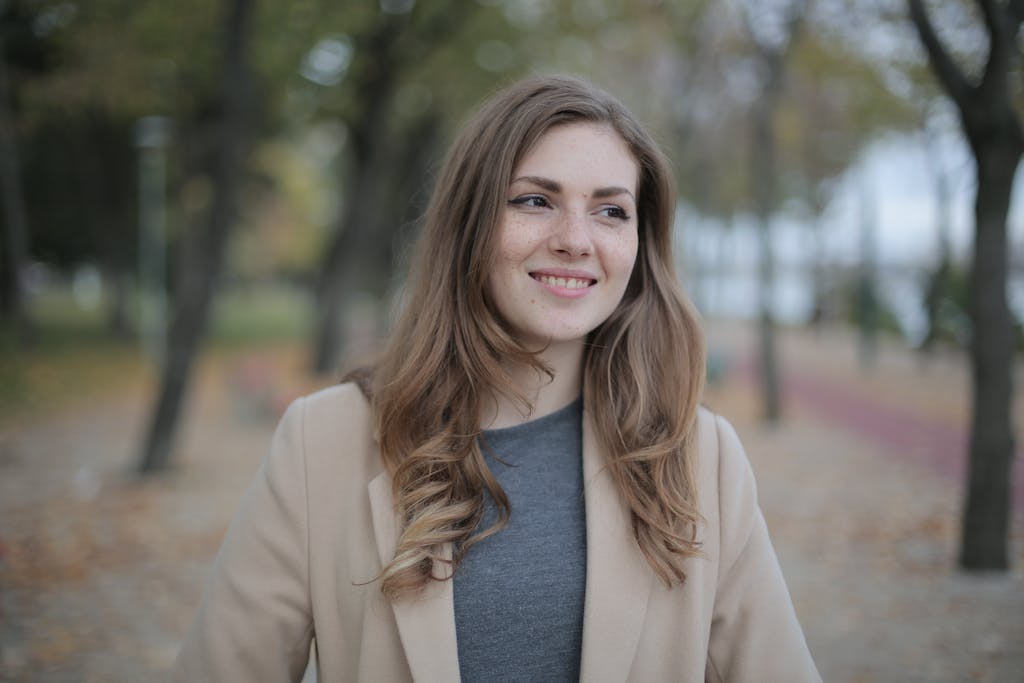
Having hair that is curly at the bottom but straight at the top is very common. The causes include differences in follicle shape and distribution across your scalp, hormonal fluctuations, product use, damage, weather conditions, and basic genetics. There are effective tips for styling contrasting textures, ranging from simple diffusing techniques to permanent chemical straightening. But self-acceptance is key—learn to work with and flaunt your distinctive combo hair!
I hope you found this breakdown of curly underside/straight top hair useful. Let me know in the comments if you have any other related questions!

Founded by Sophia Rodriguez, IGXO Cosmetics is a PETA-certified, cruelty-free, and vegan makeup brand.
